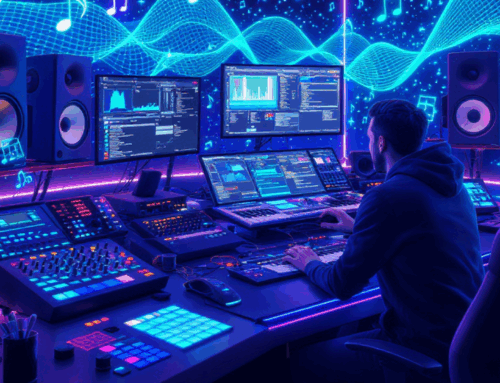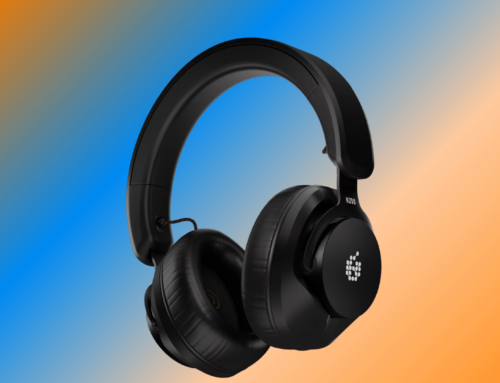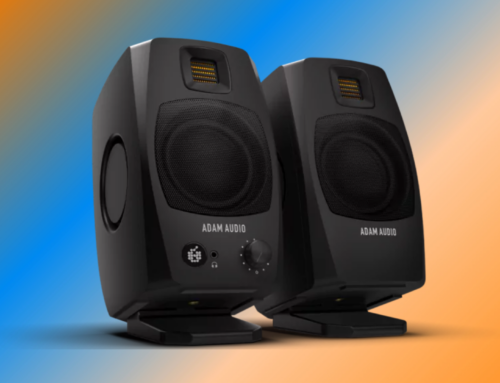Out for nearly five years now, Native Instruments’ Maschine has set a new industry standard as a hardware-software beat-production workstation. Its functionality bypasses Akia’s MPC, while serving as a high-quality studio hub (but not a full DAW) with built-in sequencing, sampling, and loop slicing.
Now considered Native Instruments’ top-tier groove production studio, Maschine, with the Maschine 2.0 software, provides unprecedented control and visual feedback. Work flow is extremely smooth, while hardware gives a sensitive response. Both aspects integrate well, although the software can be used alone or as an AU/VST/RTAS plug-in, and the hardware as a software controller or general MIDI controller.
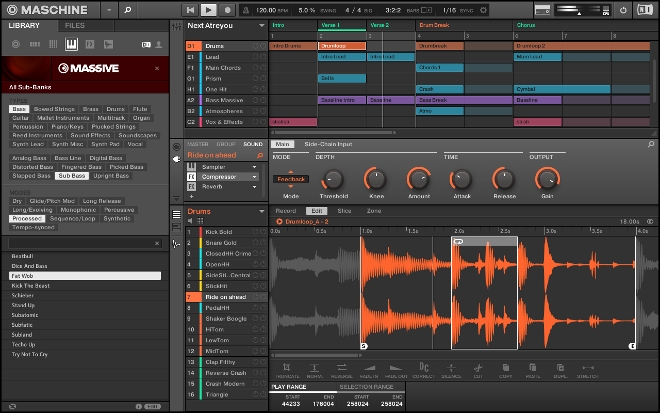
The physical plastic design itself is fairly sturdy, if not slightly on the large side. For usage, it offers twin displays and eight knobs and buttons, with the latter, made out of rubber, clearly lighting up. Native Instruments built it with high-resolution color displays, which let the user focus on the hardware rather than the computer screen. You’ll be able to see functions for browsing sounds and plug-ins, activating effects, and features for sampling, arranging, mixing, and performing.
Native Instruments designed this hybrid device with a top-notch audio engine, one that saves resources while consistently providing high-quality sounds. Advanced multi-core technology lets you simultaneously run multiple processes. All you have to do is plug and play, no matter if you plan to use Maschine as a standalone device or within your DAW.
Along these lines, the multi-color pads have a solid, sensitive feel, one that can be adjusted in the preferences to your needs. Here, you’ll find all edit buttons and an extremely exact jog wheel – the tools essential to browsing, editing, and arranging at a quick pace. As a plus, unlike other controllers, Native Instrument designed the Maschine Studio to have as few multi-function buttons as possible.
Rounding out the physical features are a dedicated level section, for quick and simple metering and monitoring, and a stand built-in at the ideal angle.
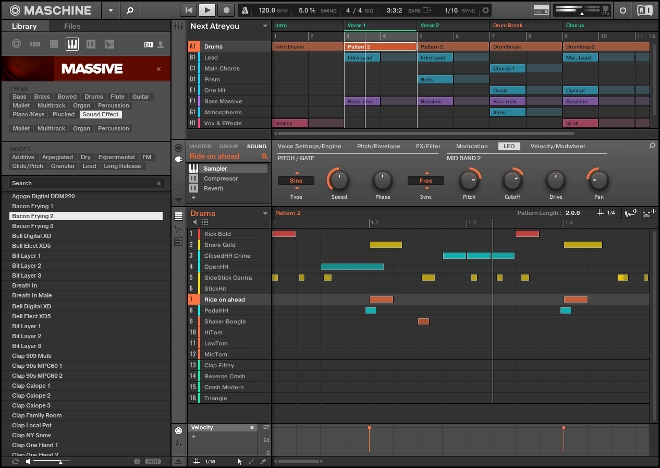
Maschine Studio functions with a tag-based browser, considered optimal for creativity. You move through it with the jog wheel, while looking at the two high-resolution screens, to find projects, groups, instrumental effects, and samples. As well, the displays allow the user to clearly see what’s going on, either browsing or cutting up and altering audio samples.
As indicated above, Maschine 2 software, with the Maschine 2.2 update, comes with this device. On a very general level, the program is what you use for browsing, arranging, and sampling, and now comes with a new mixer, a plug-in strip, dedicated drum synths, and Smart Play™ features. Usage is relatively straightforward: Through the touch-sensitive knobs, you’ll view the key parameters from a dropdown menu, and you’ll have the option of Komplete Kontrol S-Series integration.
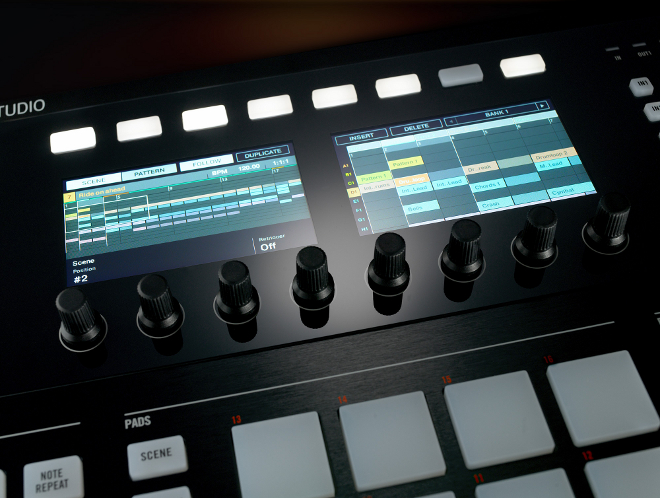
Going back to the tag cloud feature, touching the knobs takes you to this part of the hardware to see all options and functions from a pop-up list, such as routing and sound groups. Enhancing usability, Native Instruments put all on a single screen, so there’s no need to move through multiple menus.
For the basic building blocks of making music, Maschine 2.0 allows the user to select a scale and then begin playing melodies and chords within that key from the pads directly into the composition. Then, the Note Repeat turns into a fully-functional arpeggiator, which Maschine 2.0 then turns into a melodic pattern. All mentioned functions are polyphonic in a single key and can be recorded into the pattern edit function for editing later.

The software, as well, offers full keyboard functionality. All the user has to do is browse with the Komplete Kontrol Keyboard, and when the Komplete Browser comes up on your computer, just select and load a sound into slot in Maschine. You’ll have access to 8GB of sounds, including 24 dial-in pro-grade effects from the hardware and complete versions of Massive, Prism, Scarbee Mark I, and Solid Bus Comp. All created by well-known designers and artists for professional-sounding quality, these come out to 8,627 samples, 445 full drum kits, 388 multi-sampled instruments, 403 sliced loops, 1,200 patterns, 38 projects, and five drum synths, including Grit Kick and shaker performance mode. All are accessible via pads on a sample recording screen, while Native Instruments equips the program with batch functions, shifting for quick scrolling, a play quantize option, and alt and drag for single sounds. Additionally, the four full-version and integrated Komplete Instruments and Effects are included and are mapped out to the control knobs.
Furthermore, the software comes with a decent array of effects: compressors, tape and tube saturators, transient designer, reverbs, filters, EQs, grain-delay, ice verb, and Freq Shifter. These allow the user to link unlimited combinations of sounds, and can be combined with other VST/AU plug-ins.
So, considering these functions, what can you do with Maschine Studio? For one, it offers MIDI connectivity as the hub of your studio and has advanced and intuitive export-import options, allowing you to batch full sounds, groups, and individual sounds as loss-less WAV and AIFF files in up to 32-bit quality. With the rest of your setup, just drag and drop audio into your DAW; import iMaschine projects, Rex files, and MPC programs; and add MIDI data. As well, it provides unlimited groups for loading VST and Audio Units plug-ins into 16 slots, and can load as a VST, AU, or AAX plug-in into a DAW. Here, you can open up multiple instances of Maschine 2.0, all used from a single controller; route up to 16 stereo outs to your DAW; control transport functions; and map controls to your DAW’s main functions, all from a single interface.

When it comes to your tracks, Maschine offers 64-voice polyphony for each sound, with choke, legato, and glide control and even vintage sampling modes. Overall, you have the options to:
• Slice samples with Detect, Grid, Split, and Manual functions. From here, designate them to pads, just like you would play a drum part or melody.
• Edit. Maschine offers truncate, normalize, reverse, cut, copy, paste, fade in and out, silence, DC correct, duplicate, time stretch, and pitch bend functions, with automatic beat detection.
• Adaptability, including full velocity control, advanced note repeat, and swing controls for sounds, groups, and global projects. All are very simple to color-code with the hardware.
• Pattern Editing, which is a clip-based pattern sequencer for editing and modulations.
• Stop Sequencing. Just add your sounds to adjust the pitch, volume, LFO, or other parameter.
• Scenes, which are essentially the building blocks of a track. Put together groups and patterns in this function to assemble a track or to trigger in live performance.
• Mix. As you see group and individual track levels, you can route unlimited sound groups, see plug-ins, and add effects.
Overall, the intuitive flow, solid integration, and clear design, with few secondary functions, make the Maschine Studio a game-changer for producers and DJs, but it’s not a perfect device. For one, it still has a closed MIDI environment and can’t be used as a sound source in performance.
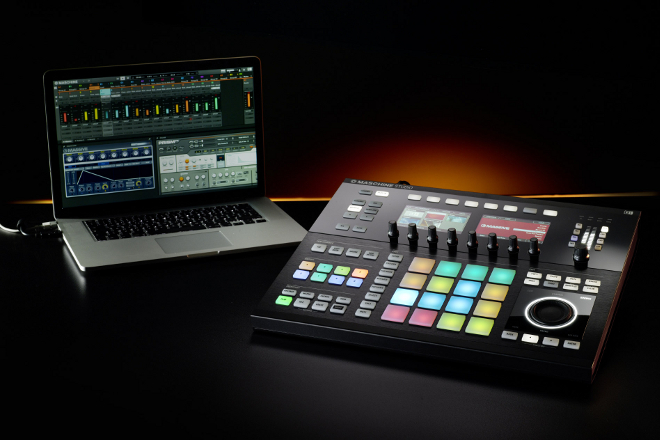
Two, while the recording aspects have vastly improved over previous models, users still consider it too basic. Specifically, the patterns functions don’t really support time signatures that aren’t 4/4, there’s limited MIDI recording, and Native Instruments didn’t add any real-time time stretch functions.
Three, if you’re looking to take this out to live gigs, keep in mind there’s no USB powering and the size can be a bit cumbersome. Be ready with an AC power source.
Ultimately, though, Maschine Studio shows there’s much to explore, create, and add to your tracks, with all of it right in front of you and just a touch away.

